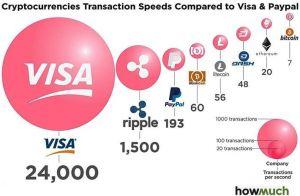What is Bitcoin Lightning Network?
Bitcoin Lightning Network is a second-layer solution that uses payment channels in order to settle transactions quickly without having to wait for block confirmations.

Can you buy a cup of coffee using Bitcoin? Before the advent of the Bitcoin Lightning Network, the answer as a sure no. Well, not anymore.
The ever-increasing value and adoption of BTC made it difficult to use it for microtransactions - small payments for everyday goods. If Bitcoin is to be a global peer-to-peer payment system, it needs to scale. High fees, congested network, long transaction confirmation times have led the Bitcoin community to look for new solutions. The Lightning Network is one of them.
What is the Bitcoin Lightning Network?
Bitcoin Lightning Network is a second-layer solution that uses payment channels in order to settle transactions quickly without having to wait for block confirmations. First proposed by Joseph Poon and Thaddeus Dryje in 2015, now it’s being developed by Blockstream, Lightning Labs, ACINQ, and other contributors to the Bitcoin community.
It’s no secret that Bitcoin has a low median of processing seven transactions per second (TPS). The number is nowhere near main global payment processors like VISA (24,00 TPS), PayPal (193 TPS), alternative cryptocurrencies like XRP (1500 TPS) or even Ethereum (ETH) (20 TPS).

The Bitcoin Lightning Network does not have any upper bound concerning TPS, as a single channel in the network can process over 250 TPS, and there’s no limit to how many channels can join the network.
How does the Lightning Network work?
Fundamentally, the Lightning Network lets users engage in multiple off-chain transactions with only initial and final wallet balances being written into the Bitcoin’s blockchain. Such an approach significantly increases the network’s throughput and decreases transaction fees. Besides, it adds another layer of user security and anonymity.
However, the Lightning Network is not a panacea, and its critics point out its flaws too, including potential centralization and reduced security.
How to use the Bitcoin Lightning Network?
Here are the Bitcoin wallets that support the Bitcoin Lightning Network:
- Lightning Peach (Android, iOS, Windows, Mac, Linux)
- Spark (Android, Windows, Mac, Linux)
- Tippin.me (Web)
- Bluewallet (Android and iOS)
- Breez (Android and iOS)
- Wallet of Satoshi (Android and iOS)
- Zap (iOS, Windows, Mac, Linux)
- Bitcoin Lightning Wallet (Android)
- Eclair (Android)
- Shango (Android and iOS)
- Casa Node (Hardware)
- Joule (Browser plugin for Chrome (incl. Brave), Firefox, Opera)
You’ll need to fund it before you can use it. Simply do a regular BTC transaction to your new Lightning wallet address.
Once your wallet is funded, you’ll have to open a Lightning channel. Every wallet works differently, so follow its navigation or tutorial to do so. Once the Lightning channel is open, you’re free to send payments to someone else. Besides, there's a limit to how much money can be send and received via the Lightning Network. Currently, it stands at 0.168 BTC.
Note that with most wallets you won’t be able to receive Lightning payments until you fund a wallet, open a channel and make a payment. Besides, your channel may be required to have sufficient liquidity to accept payments of a certain size. The only exception is the web wallet Tippin.me, which enables you to receive tips for good deeds and Tweets on Twitter.
